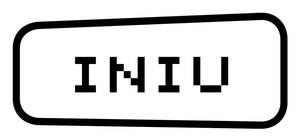Collect the 30% off coupon.
- [From INIU - the SAFE Fast Charge Pro] Experience the safest charging with over 38 million global users. At INIU, we use only the highest-grade materials, so we do have the confidence to provide an industry-leading 3-Year iNiu Care.
- [22.5W Speedy Charge] Combined with the most advanced PD 3.0 & QC4+ fast charging technologies, INIU 22.5W portable charger power bank can incredibly fast fuel your new iPhone from 0 to 65% in 30mins, 2X faster than traditional 2.4A chargers.
- [Ultra Portable Design] The capacity of 10000mAh is stored in an incredibly slim body that is 36% thinner, 15% smaller, 28% lighter than its kinds. You can easily take it anywhere without feeling bulky and heavy.
- [2024 Version USB C Input & Output] Unlike most chargers featuring a USB C input only, INIU portable phone charger iphone has a USB C In & Out port to perfectly fit your new iPhones, iPad and all upcoming USB C devices.
- [Power for Weeks] The slim but powerful INIU 10,000mAh portable charger can provide Samsung S8 with 2.0 charges, iPhone 8 with 3.3 charges, AirPods Pro MagSafe Case with 11.5 charges, and iPad Mini 3 with 1.0 charges.
- [Vast Compatibility] INIU iphone portable charger fast charging fits every device from big as iPads to small as AirPods. Plus an automatically-adapted trickle-charging mode, small devices can also get optimized power without affecting battery health.
- [What You Get] INIU 10000mAh battery pack charger portable, USB C cable, travel pouch, user manual, INIU industry-leading 3-Year INIU Care and lifetime technical support.
![[Prime] INIU 22.5W 10000mAh USB C Power Bank with LED Display $17.84 Delivered @ INIU via Amazon AU](https://files.ozbargain.com.au/n/47/866747.jpg?h=c2f262ba)



 CamelCamelCamel
CamelCamelCamel

Was $10.49/$12.74 last month.